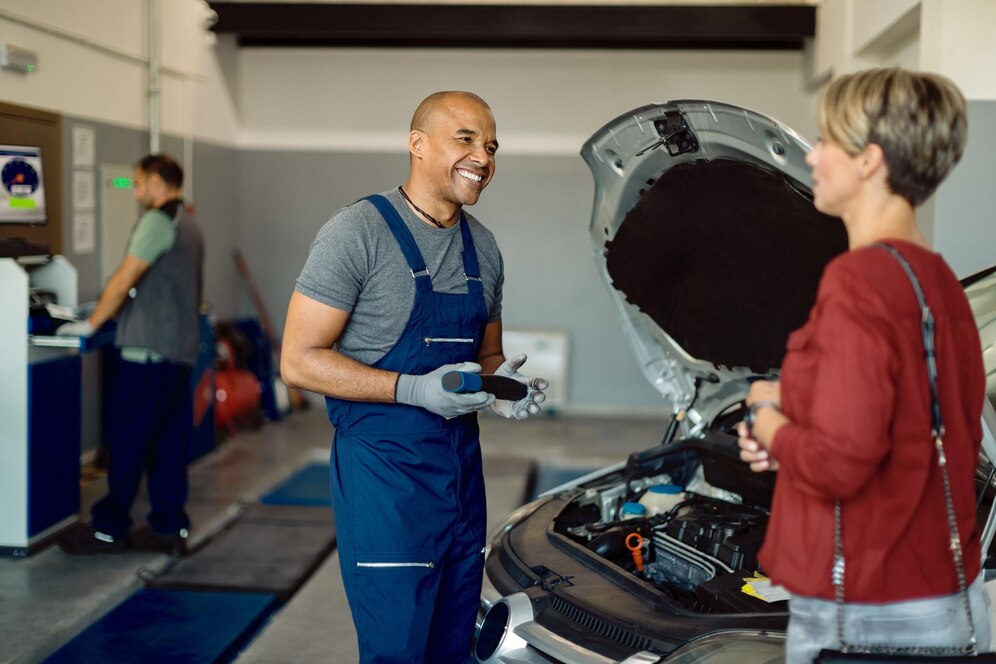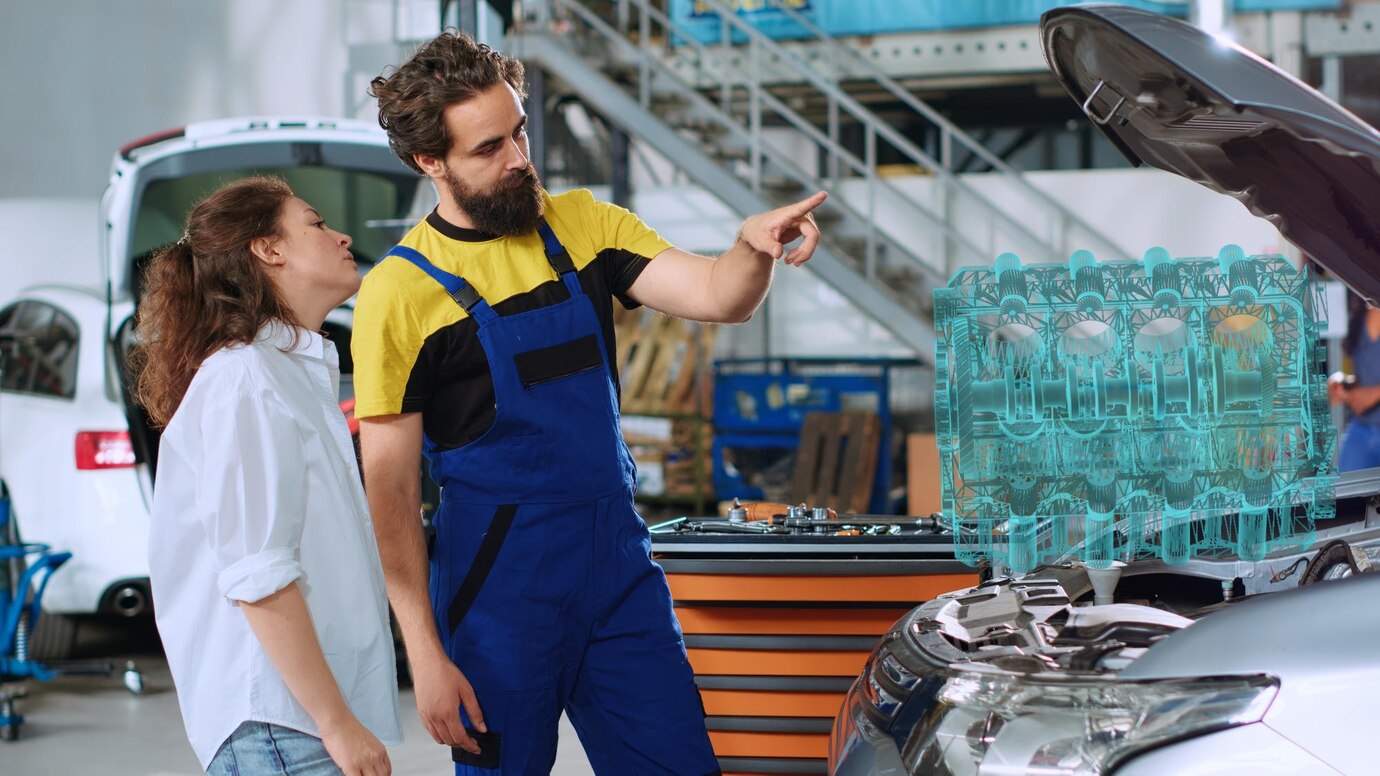introduction
Keeping your car in top condition requires more than just regular maintenance; it demands a deeper understanding of expert repair techniques and proactive care. Whether you’re a seasoned car enthusiast or a beginner looking to level up your skills, learning expert techniques can help you diagnose issues faster, repair them more effectively, and extend the lifespan of your vehicle. This comprehensive guide covers advanced car repair techniques and professional maintenance tips to keep your car running like new.
Why Expert Car Repair Techniques Matter
Mastering advanced auto repair techniques not only increases your confidence in handling unexpected breakdowns but also helps you save money on mechanic fees. Here’s why expert-level knowledge is valuable: Cost Savings: Handling repairs yourself reduces labor costs and markup on parts. Improved Performance: Fine-tuning and expert-level care can enhance your car’s fuel efficiency, power, and handling. Safety: Correctly addressing issues lowers the likelihood of mechanical failure while driving. Extended Vehicle Lifespan: Professional-grade maintenance ensures that your car remains in peak condition for years
Essential Tools for Expert-Level Car Repairs
To efficiently identify and resolve issues, professional mechanics rely on specialized equipment. Here’s a list of essential tools every car owner should consider:
Hand Tools:
Torque Wrench Ensures bolts and nuts are tightened to the manufacturer’s specification.Breaker Bar Provides extra leverage for removing stubborn bolts.Impact Wrench For quick removal of lug nuts and other fasteners.
Diagnostic Tools:
Compression Tester measures the pressure inside the engine cylinders. Vacuum Gauge diagnoses vacuum leaks, timing issues, and carburetor performance. OBD2 Scanner reads and clears fault codes from the car’s computer.
Repair Tools:
Brake Bleeder Kit Essential for removing air from the brake lines.Fuel Pressure Gauge Helps diagnose fuel delivery issues.Battery Load Tester Measures the battery’s ability to hold a charge.
Expert Techniques for Common Car Repairs
An engine misfire can reduce power, fuel efficiency, and increase emissions.
Symptoms:Rough idling or hesitation.Loss of power under acceleration.Increased fuel consumption. Utilize an OBD2 scanner for expert assistance: Connect the scanner and look for misfire-related codes (such as P0301 – Cylinder 1 Misfire). Conduct a Test of Compression: Check Ignition System: Check the ignition coils and spark plugs for wear or failure. Replace any faulty components. Check Fuel Delivery: Test the fuel injectors for blockages or poor spray patterns. Clean or replace as necessary.Crank the engine and check the pressure in each cylinder. If pressure is low, the issue could be worn piston rings or valves.
Fixing a Leaking Radiator
A leaking radiator can cause overheating and engine damage.

Symptoms:
Puddle of coolant under the car.Engine temperature running high.White steam from the engine bay. Expert Technique:Pressure Test the Cooling System:Use a radiator pressure tester to identify leaks.Seal Minor Leaks:For small leaks, use a radiator sealant.Pour the sealant into the radiator and run the engine.Replace Damaged Hoses:If a hose is cracked or worn, replace it with a new one.Flush and Refill Coolant: Drain old coolant, flush the system with distilled water, and refill with fresh coolant.
Diagnosing and Repairing Brake Fade
Brake fade reduces stopping power and can be dangerous.
Symptoms:
Soft or spongy brake pedal.Longer stopping distance.Burning smell from the wheels. Bleed the Brake System: Use a brake bleeder kit to remove air from the lines. Start with the wheel that is furthest from the master cylinder and work your way inward. Inspect the Brake Pads and Rotors: Measure the thickness of the pads and replace them if they are less than 3 millimeters thick. If the rotors are warped or uneven, resurface them or replace them. Check the Condition of the Brake Fluid: If the brake fluid is dark or
Fixing Poor Fuel Economy
Declining fuel efficiency can result from multiple underlying issues.
Symptoms:
Reduced miles per gallon.Loss of power during acceleration.Strong fuel smell from the exhaust. Expert Technique:Check the Air Filter:Replace if dirty or clogged.Inspect Oxygen Sensors:A faulty oxygen sensor can cause poor fuel-to-air ratioReplace sensors if diagnostic codes confirm failure.Test Fuel Injectors:Remove and clean clogged injectors using an ultrasonic cleaner.Replace faulty injectors.Check Tire Pressure:Low tire pressure increases rolling resistance and reduces fuel economy.
Proactive Maintenance Tips for Longevity
Use high-quality synthetic oil for better performance and protection. Follow the manufacturer’s recommended oil change interval (usually every 5,000 to 7,500 miles). Fluid should be changed every 30,000 to 60,000 miles because old transmission fluid can lead to gear slipping and delayed shifting.
Check Battery HealthClean battery terminals to prevent corrosion. Test battery voltage regularly and replace it if it drops below 12.4V.
Maintain Suspension and AlignmentCheck shock absorbers for leaks or wear. Rotate tires every 5,000 miles and check alignment annuallyInspect Belts and HosesLook for cracks or fraying on belts and hoses. Replace timing belts every 60,000 to 100,000 miles (based on manufacturer guidelines).
When to Seek Professional Help
While many repairs can be done at home, some issues require professional expertise: Transmission Repairs: Internal transmission problems often require specialized tools Engine Rebuilds: Repairing internal engine components is complex and time-consuming Electrical Failures: Diagnosing electrical shorts and sensor failures can be challenging without professional diagnostic equipment. Advanced Airbag Systems: Repairing or resetting airbag systems should be handled by certified technicians
Safety Tips for DIY Repairs
Always work on a level surface and engage the parking brake. Never rely solely on a jack; use jack stands. When you are working on electrical systems, disconnect the battery. Wear safety glasses and gloves when handling chemicals or tools. When working on fuel or electrical systems, keep a fire extinguisher nearby.

Conclusion
Mastering expert car repair techniques and maintenance tips empowers you to keep your vehicle in top condition. From diagnosing engine misfires to fixing poor fuel economy, understanding advanced repair methods saves you money and enhances your car performance. You can handle most repairs yourself with the right tools, knowledge, and attention to detail, resulting in a safer, smoother, and more effective driving experience.

